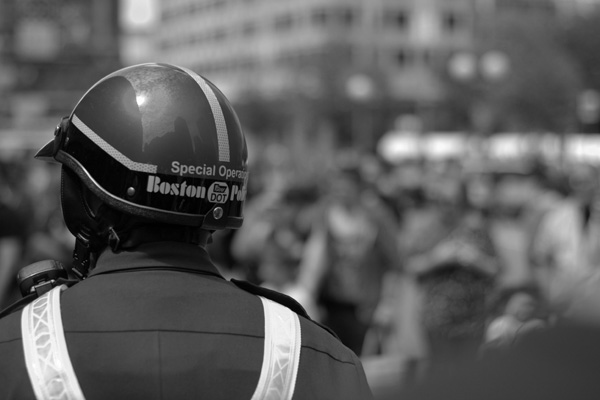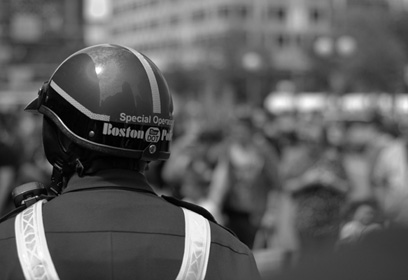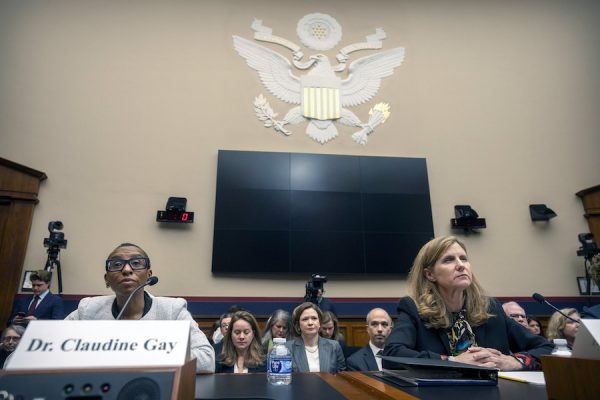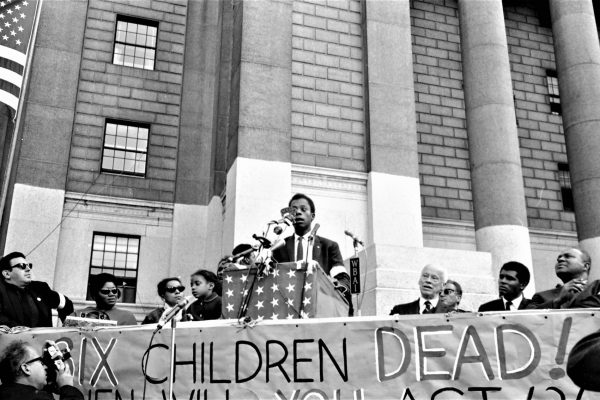
Photograph: Oliver Fenton
During police encounters, whose fear counts? The question distills a legal asymmetry central to the oppression and killing of African Americans at the hands of police. For the most part, a suspect’s concerns for his or her safety and liberty matter not at all, despite widespread police use of force, particularly against racial minorities. By contrast, the sense of threat experienced by police can exonerate them when they use excessive force against suspects, or even kill.
Yet last week’s groundbreaking decision of the Massachusetts Supreme Judicial Court (SJC) in Commonwealth v. Warren points to a more just future in which the threat posed by police is taken seriously.
In its ruling, the Massachusetts high court overturned the conviction of Jimmy Warren, a black man who was arrested at gunpoint by Boston police in December 2011 on suspicion of burglary. According to police, Warren and an associate fit a vague witness description of the thieves: black men wearing hooded sweatshirts. Shortly after the crime, Warren and his companion were approached by a Boston police officer in a cruiser, who shouted to them. They jogged away, and the officer called for backup. Two more officers arrived, leading to a foot chase. Eventually Warren was cornered and taken into custody. He had none of the stolen items, but a pistol was found discarded nearby, and he was later charged with and convicted for unlawful possession of a firearm.
On appeal, the SJC determined that the vague description of Warren and his companion, and their flight from officers, were insufficient grounds for a police seizure. In doing so, the justices validated, to some degree, black men’s fear of police.
In light of enduring police misconduct, black men have good reason to flee the police.
The ruling acknowledges that, in light of enduring police misconduct, black men have good reason to flee the police. Because black men in Boston, as nearly everywhere in the United States, are subject to racial profiling—as demonstrated by findings of the ACLU and Boston Police Department itself, not to mention the lived experience of countless black men—the decision to run cannot be seen automatically as an admission of guilt, for it “might just as easily be motivated by the desire to avoid the recurring indignity of being racially profiled.”
The SJC says nothing about whether a history of police use of force, or suspects’ experience of that force, also provides grounds to avoid police. But the parallel between excessive force and racial profiling is striking, and the doctrine implied in the ruling is potentially far reaching. If escaping indignity is an acceptable motivation for evasion of police, then surely protecting oneself from harm is as well. And while excessive force is not as pervasive as racial profiling, its immediate effects are much more damaging, raising the question of why preventing bodily harm cannot also be a valid defense for suspects who keep away from police.
Of course, the SJC does not want to encourage flight from officers, but it does take the important step of conceding that black men’s fears of police are legitimate and, in principle, sources of justification for their behavior during police encounters. To date, American criminal justice has refused to do this, granting police enormous leeway while largely ignoring the threat they pose to black men, especially.
Consider another event last week: Keith Scott, a forty-three-year-old black man with a traumatic brain injury, was shot and killed by officers in Charlotte, North Carolina, after they ordered him to leave his car. The officers claim that they saw Scott in the car holding a joint and a gun and thus perceived him to be “an imminent lethal threat,” though, according to video, the police present the only clear threat, armed and armored as they demand that he exit his SUV. A few seconds later, having never even raised his arms, he was shot dead.
It is easy to see why a person in Scott’s position would have felt at risk and therefore refused to leave the car when first ordered. Warren ran; Scott, with nowhere to run, attempted to hide. But, after repeated police demands, he complied, only to be shot immediately. If Scott ever conceivably posed an imminent threat to police—a dubious proposition—it was after he exited the car, which the police ordered him to do.
And yet, their perception of “imminent lethal threat” once Scott acquiesced may be their saving grace. This is thanks in large part to a 1989 U.S. Supreme Court case, Graham v. Connor, which held that the determination of excessive use of force must be based only on whether officers’ decisions are “objectively reasonable.” Technically, this means an officer’s state of mind is not relevant to any legal determination, but the Court outlined no useful limits on what constitutes objectively reasonable action. Rather, the Court grants police wide latitude, indicating, “The calculus of reasonableness must embody allowance for the fact that police officers are often forced to make split-second judgments—in circumstances that are tense, uncertain, and rapidly evolving.”
In other words, the tension of circumstance is a viable defense for an officer accused of using excessive force. The sense of threat speaks to the nature of circumstances. Whether this sense of threat is reasonable must be evaluated; simply fearing for oneself is not enough. But officers at least have a chance to argue this line of defense, and it is not at all clear when circumstances render their assessment objectively wrong.
In some cases, prosecutors and grand juries decide that officers act in ways objectively unreasonable. This is why an officer, Betty Shelby, has been charged with manslaughter in the death of Terence Crutcher, who was shot during a police encounter in Tulsa, Oklahoma, a few days before Scott was killed. Apparently, video was dispositive in that incident.
But even where video would seem to establish that nothing justifies use of deadly force, officers can get away with extreme violence. Recall the case of New York City officer Daniel Pantaleo, who was charged with no crime after film showed him, with the aid of several other officers, choking Eric Garner to death while in no apparent danger. Or consider John Crawford III, who was killed on video by police officer Sean Williams in an Ohio Walmart while holding a toy gun sold at the store. Crawford, who was alone in a corner of the store, was pointing the gun downward and turning away from Williams when the officer shot him. The police encounter took one second. Having weighed the evidence, grand jurors decided that Williams acted reasonably.
By contrast, suspects are granted no such careful consideration of circumstances. Innumerable cases of violent policing and racial profiling demonstrate that black men especially have much to fear from police—that the presence of officers threatens their safety and liberty. Yet these facts, and the fear they reasonably inspire, are of no consequence when evaluating the actions of suspects responding to police encounters.
Until now, that is. The Warren decision doesn’t prevent Massachusetts police officers from defending their own actions on the basis of circumstance. It simply permits black suspects to do so, as well. In effect it says that everyone deserves a chance to have the reasonableness of their actions judged on those grounds.
The Massachusetts high court’s decision is therefore a visionary one, helping to achieve, at least in that state, a degree of balance and protection for citizens at special risk from official violence and dispossession of liberty. For the good of the nation as a whole, we should hope that courts in other states, and at the federal level, follow its lead.








